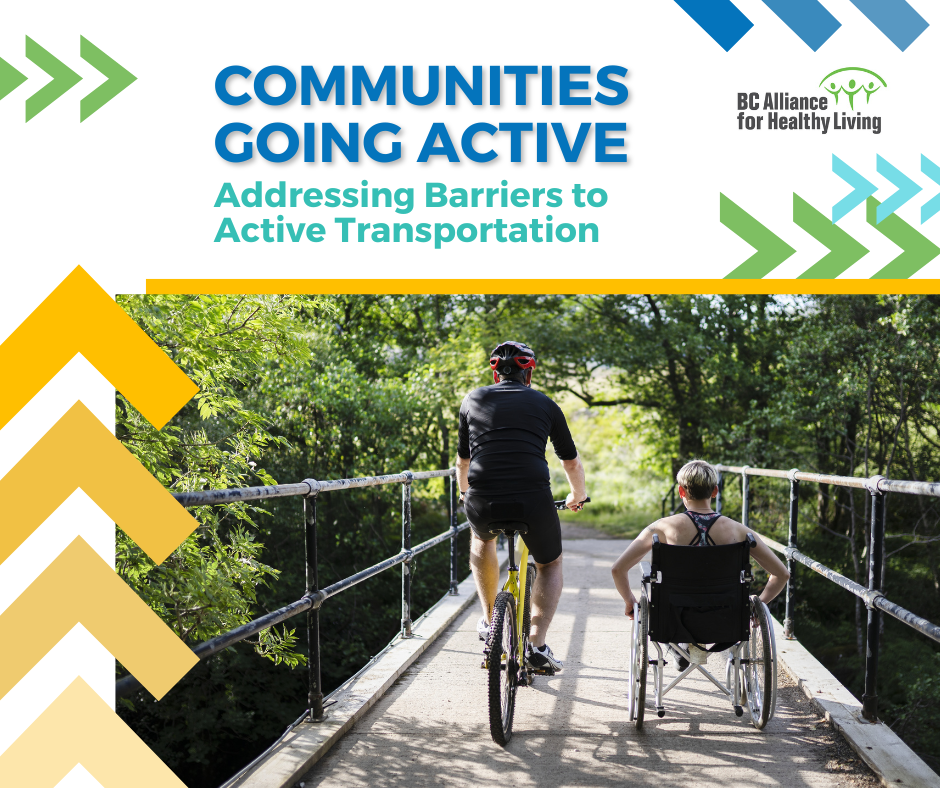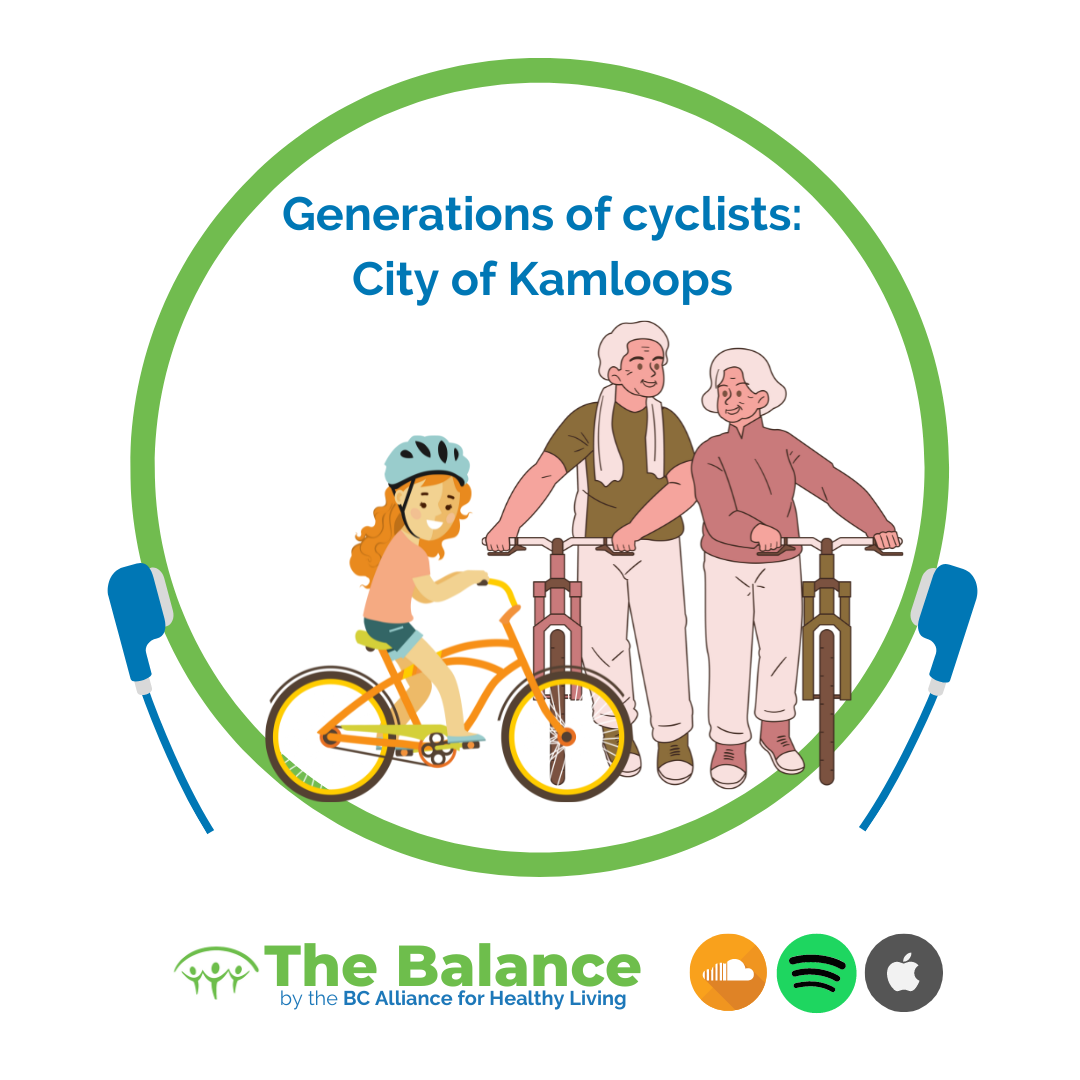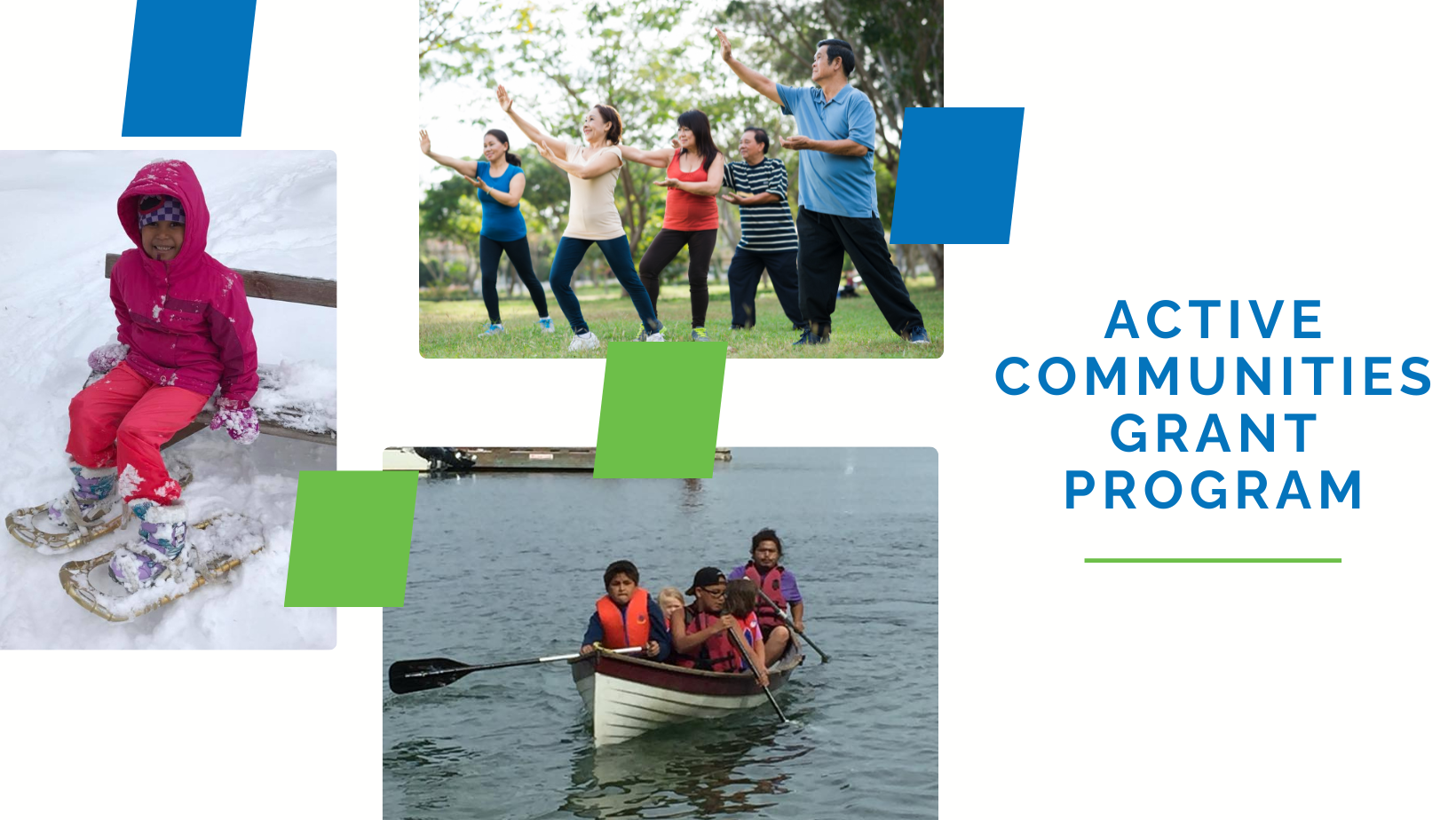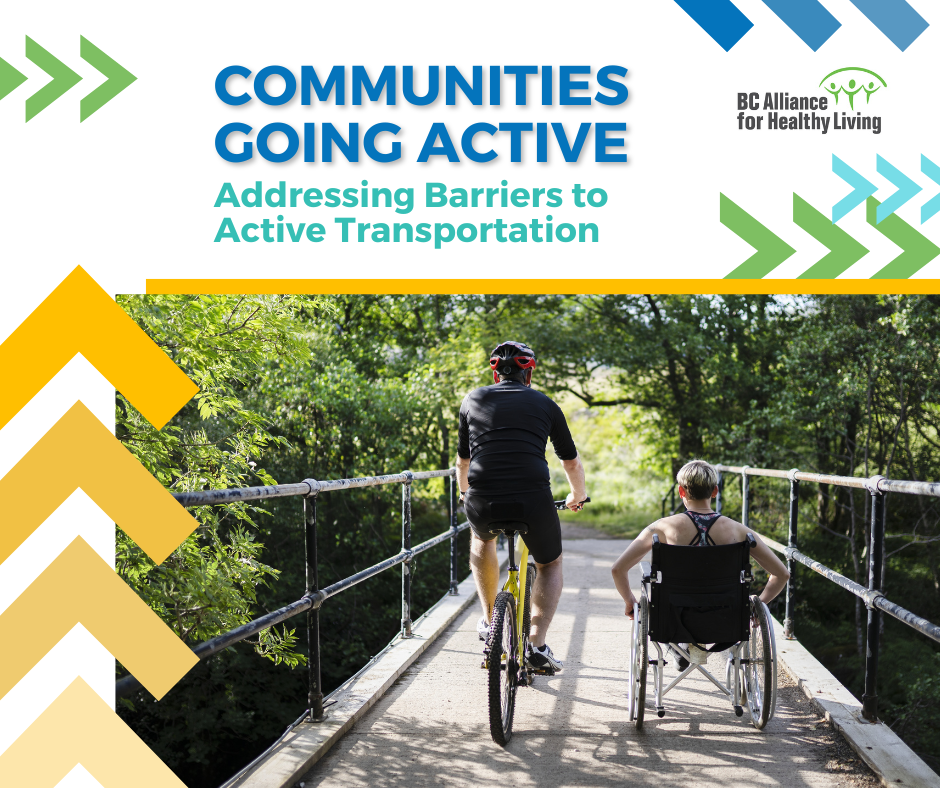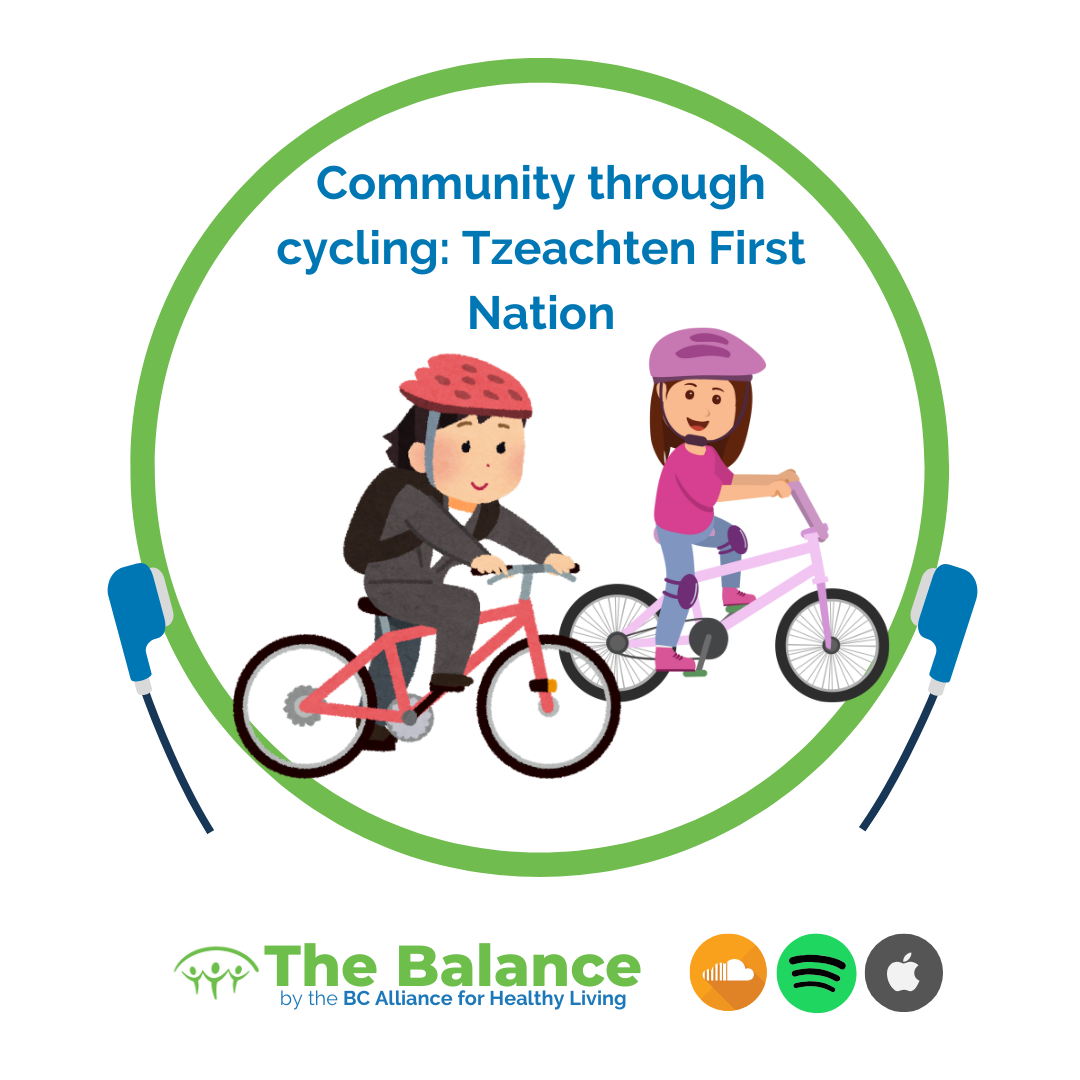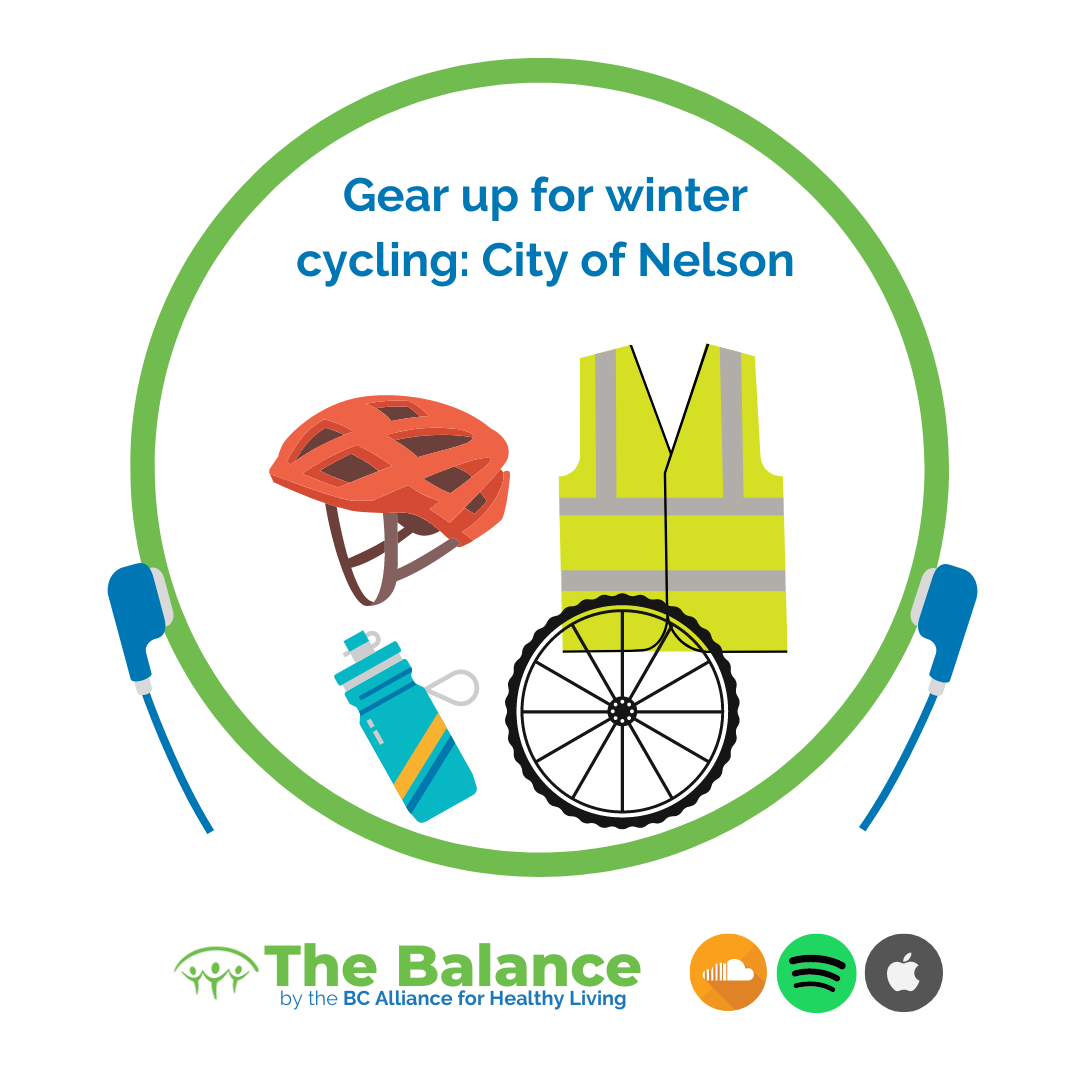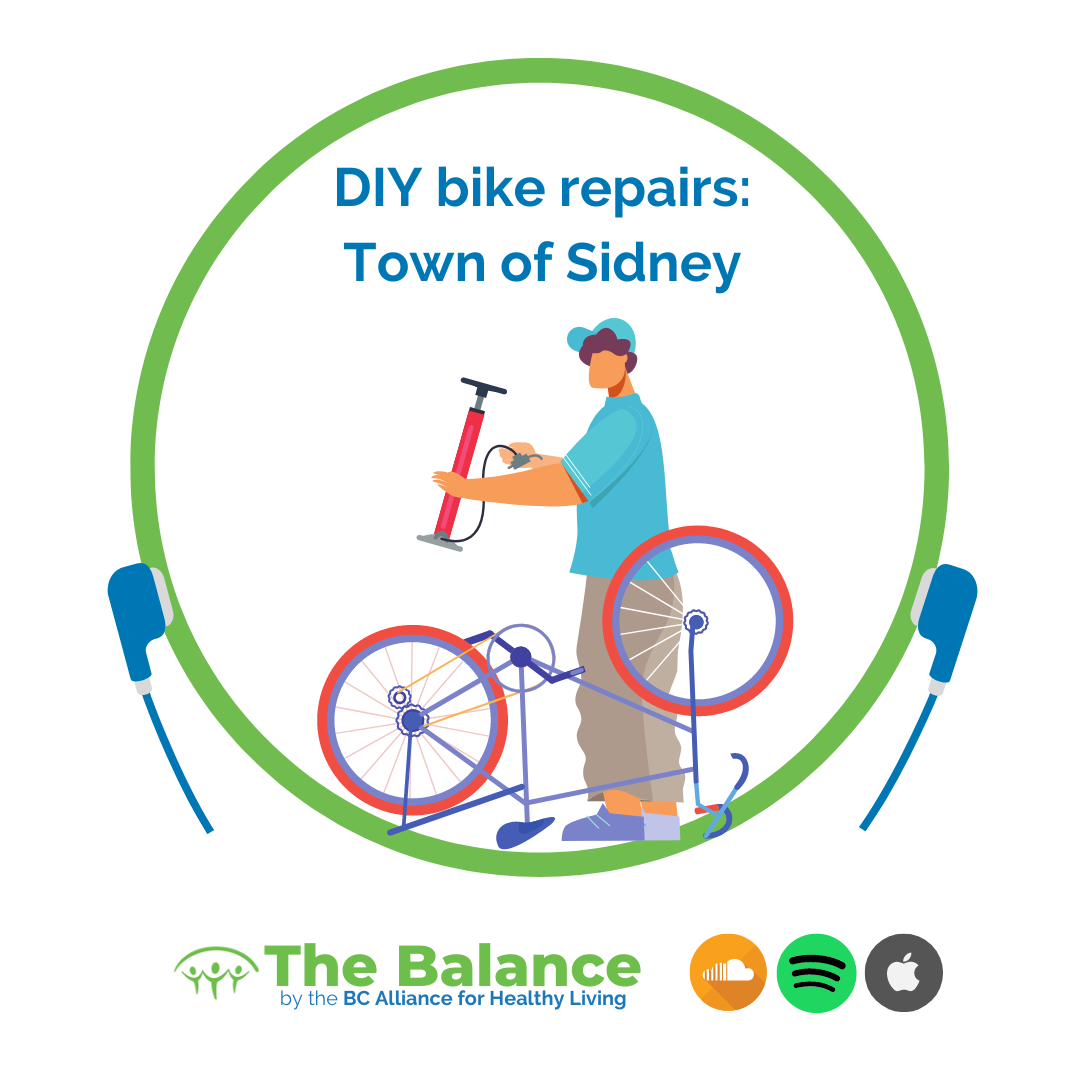Engage
Learn more about BCAHL and healthy living through our blogs, press releases, podcasts episodes, and webinars.
-
In the media: Active Play Club
We are excited to share that our Active Play Club program was recently featured on CBC’s Radio West. Our Kelowna community partner, Childhood Connections, discussed what the Active Play Club program is about, the benefits of unstructured active play for kids, and why we need more programs like this! Listen to the episode here:
-
Year-round active transportation: tips and advice for beginners
Listen to Jen Petersen and Peter Ladner from BC Cycling Coalition talk about their experiences using active transportation year-round for work, chores, and leisure. They share tips on how to adjust to different seasons, optimal gear to look out for, keeping yourself safe, and ways you can make active transportation possible for you and your…
-
Healthy and Resilient BC: A Voter’s Guide
BC is facing a perfect storm of intersecting crises: affordability, extreme weather due to climate change and a healthcare system under strain. All of these issues are adding to poor mental health, which is making the opioid and substance use crisis worse. The good news is that with the upcoming provincial election on October 19,…
-
Communities Going Active: Addressing Barriers to Active Transportation recording
We know active transportation has many benefits: it can reduce traffic congestion, lower greenhouse gas emissions, and encourage communities to be physically active, which in turn helps prevent chronic diseases and fosters mental wellness. Yet, many people living in British Columbia can’t participate, whether they feel it takes too long to walk or bike, they…
-
Communities Going Active: City of Kamloops
In this five-part Communities Going Active series, we will hear about local governments and groups that launched projects to promote and encourage the use of active transportation in their communities. These projects address barriers that prevent people from trying out cycling or even scootering, such as costs, lack of gear, or perhaps lack of experience.
-
$1.5M Investment Inspires More People to Get Moving in B.C.
BC Alliance for Healthy Living (BCAHL), in partnership with Indigenous Sport, Physical Activity and Recreation Council (I·SPARC) and the Ministry of Health, is excited to announce 39 communties across the province have been funded to lead local active living projects as the first recipients of the Active Communities Grant Program. The generous $1.5 million investment…
-
Communities Going Active: District of North Vancouver
In this five-part Communities Going Active series, we will hear about local governments and groups that launched projects to promote and encourage the use of active transportation in their communities. These projects address barriers that prevent people from trying out cycling or even scootering, such as costs, lack of gear, or perhaps lack of experience.
-
Communities Going Active: Addressing Barriers to Active Transportation
Active transportation has many benefits: it can reduce traffic congestion, lower greenhouse gasemissions, and encourage communities to be physically active, which in turnhelps prevent chronic diseases and fosters mental wellness. We are fortunate to live in a beautiful province with many natural trails and built environments that fosteractive transportation in our communities. However, many people…
-
Communities Going Active: Tzeachten First Nation
In this five-part Communities Going Active series, we will hear about local governments and groups that launched projects to promote and encourage the use of active transportation in their communities. These projects address barriers that prevent people from trying out cycling or even scootering, such as costs, lack of gear, or perhaps lack of experience.
-
Extreme Heat and Smoke Safety Guide
Heat and poor air quality continue to be a concern for many in the province, especially with how it affects our bodies and the way we move outdoors in the summer.
-
Communities Going Active: City of Nelson
In this five-part Communities Going Active series, we will hear about local governments and groups that launched projects to promote and encourage the use of active transportation in their communities. These projects address barriers that prevent people from trying out cycling or even scootering, such as costs, lack of gear, or perhaps lack of experience.
-
Communities Going Active: Town of Sidney
In this five-part Communities Going Active series, we will hear about local governments and groups that launched projects to promote and encourage the use of active transportation in their communities. These projects address barriers that prevent people from trying out cycling or even scootering, such as costs, lack of gear, or perhaps lack of experience.
- Show All
- Active People Active Places
- Alcohol
- BCAHL Blog
- Communities on the Move
- Community Capacity Building
- Engage
- Health Inequities
- Healthy Eating
- Healthy Living
- Media
- Members only
- Mental Wellness
- Non-Voting Members
- Our Members
- Our Network
- Physical Activity
- Podcasts
- Policy
- Press Releases
- Reports
- Resources & Toolkits
- Tobacco Reduction
- Toolkits
- Uncategorized
- Voting Members
- Webinars
- What We Do
- Working Together
Become a Member
Lorem ipsum dolor sit amet, consectetur adipiscing elit. Vivamus sagittis lacus vel augue laoreet rutrum faucibus dolor auctor.
email@address.comContact Us
Questions about our policy recommendations, resources, initiatives, and activities? Reach out to us.
Contact Us


